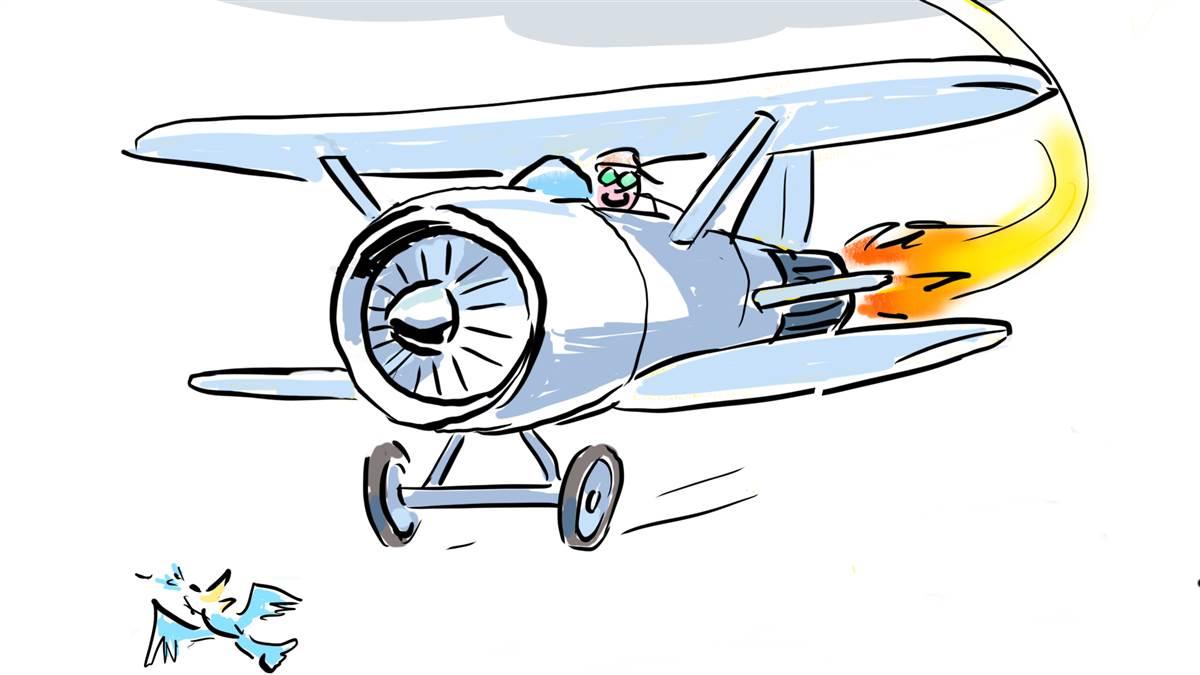Test pilot

2. True or false? A pilot is approaching an airport at night over hilly terrain. The error resulting from using an incorrect altimeter setting that is too low is more dangerous than using an incorrect altimeter setting that is too high.
3. Why was the Boeing 747 designed with its distinctive, signature hump? (No, it was not to make room for the captain’s bulging wallet.)
4. The horse latitudes encircle the Earth at about 30 to 38 degrees north and south latitude and are characterized by light surface winds. Why are they so named?
5. From reader John Schmidt: True or false? There have been many types of jet-powered aircraft, including production, jet-powered biplanes. (This is Mr. Schmidt’s 100th contribution to “Test Pilot.” Thank you, John.)
6. The greatest number of engines ever used to power a production airplane is
A. 8
B. 10
C. 12
D. 14
7. The Waco CG–4 was a cargo glider that played a significant role during World War II, but what was the Cessna CG–2?
8. Two pilots about to depart at night in an alternator-equipped, single-engine airplane discover that the battery is dead. After hand-propping the engine to a start, the pilots take off and complete a routine flight. What is wrong with this scenario?
Test Pilot Answers
1. Lost and low on fuel, the C–47 was descending wheels down toward a Japanese-occupied airstrip on Batan Island. Knowing how Americans were treated by the Japanese, Curdes attempted to warn the pilots visually and by radio. Unsuccessful, he then shot out the engines, forcing the C–47 to ditch. The 12 occupants were rescued the next day by the crew of a PBY amphibian.
2. False. When using an altimeter setting that is too low, the altimeter indicates lower than the actual altitude. In other words, the aircraft is above the indicated altitude, a safe-side error. The danger occurs when using a setting that is too high; the pilot is lower than he thinks he is.
3. The 747 was intended to be used also as a cargo carrier. The hinged nose section could be raised to allow cargo and vehicles to be loaded through the nose and directly into and along the fuselage. Such a configuration required that the cockpit be elevated out of the way.
4. Ancient sailing vessels made poor progress with little wind to propel them. A popular theory claims that horses were thrown overboard to lighten the load.
5. True. The Polish firm PZL Mielec manufactured 175 M–15 Belphegors during the 1970s for use as agricultural aircraft in the Soviet Union. The strange-looking airplane was technically a sesquiplane, a variety of biplane where the bottom wing (usually) is significantly smaller than the other.
6. C. The 1929 German Dornier Do X flying boat was powered by 12 Curtiss Conqueror engines mounted in six pairs along the top of the wing. Each pair consisted of a tractor and a pusher mounted fore and aft in a single nacelle.
7. Inspired by German designs, the Cessna Glider (CG) was a small, kit-built aircraft that sold for $398 and came with a bungee launch system. It was intended in 1930 to keep Cessna afloat during the Great Depression. It didn’t work. Cessna closed its doors between 1932 and 1934.
8. An alternator cannot function without a slight current flow from the battery. Therefore, if the battery is totally discharged, the alternator cannot operate and the battery will remain dead. The entire electrical system would remain inoperative.

